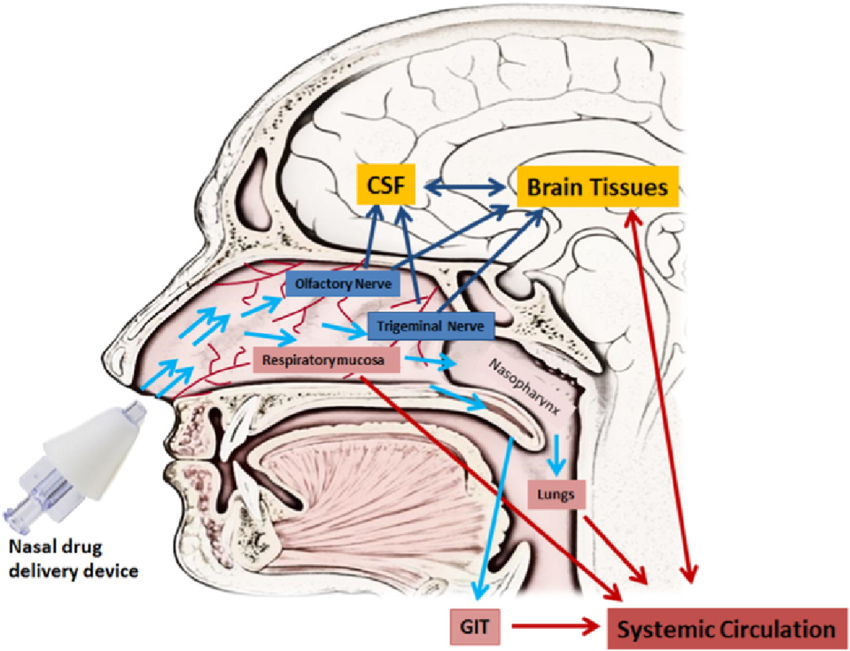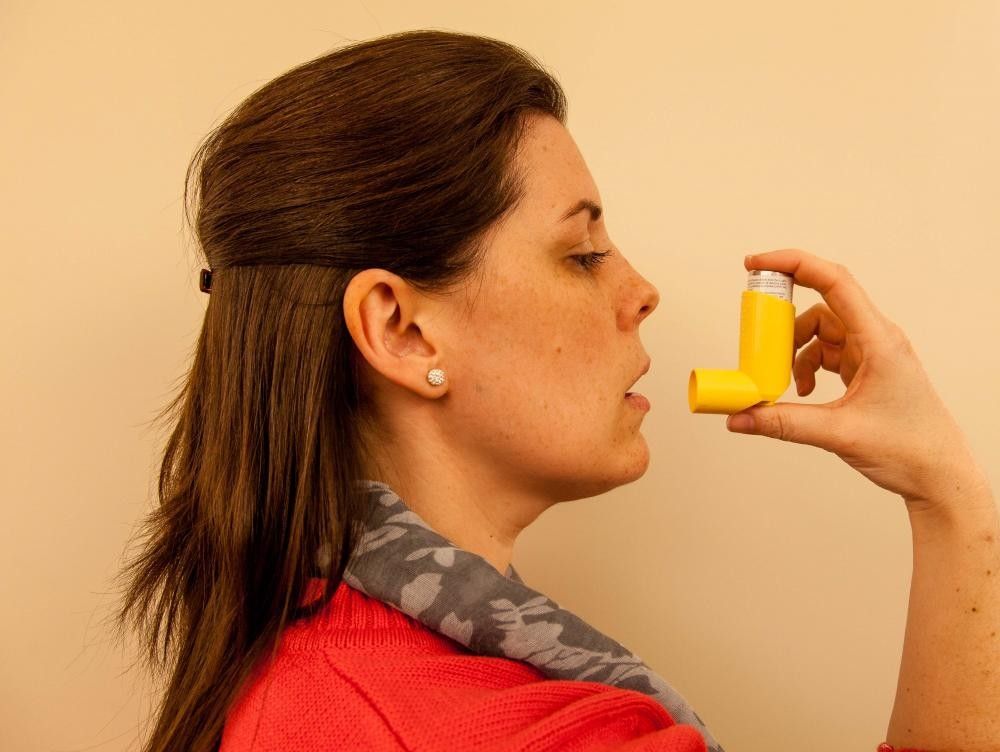Other Routes of Medication
Published (updated: ).
Intranasal Route

This can be utilized in administering nasal decongestants for cold or allergy treatment. Other uses include desmopressin for the treatment of diabetes insipidus or intranasal calcitonin for the treatment of osteoporosis.
Factors that affect the rate of absorption of drugs via the nasal route are:
- The rate of nasal secretion – The rate of secretion is inversely proportional to the bioavailability of the drug.
- Ciliary movement – The speed of ciliary movement is inversely proportional to the bioavailability of the drug.
- Vascularity of the nose – The volume of blood flow is directly proportional to the rate of drug absorption.
- Metabolism of drugs in the nasal cavity – The enzymes present in the nasal tissues alter the absorption of some compounds especially peptides that are disintegrated by aminopeptidases.
- Diseases affecting nasal mucous membrane. Common colds can affect nasal drug absorption.
Advantages:
- Increased permeability of the nasal mucosa compared to the gastrointestinal mucosa.
- Highly vascularized subepithelial tissue.
- Quick absorption, usually within thirty minutes
- Avoids the first-pass effect.
- Avoids the effects of gastric stasis and vomiting.
- Ease of administration.
- Higher bioavailability of the drugs than in the case of the enteral route or inhalational route.
Disadvantages:
- Nasal cavity diseases and conditions may result in impaired absorption.
- The dose is limited due to the small area available for absorption.
- The time available for absorption is limited.
- This route is not applicable to all drugs.
Inhalational Route

The alveolar epithelium is approximately 100 square meters in adults and the alveolar volume is 4000–6000 mL when compared to the airway volume of 400 ml. This provides a greater surface area for absorption of the inhaled substances. An inhaled medication route can be utilized to administer albuterol or corticosteroids such as fluticasone and to deliver inhaled anesthetics to patients.
Barriers to the absorption of substances in the alveoli are surfactants, surface lining fluid including the mucus, the epithelial membrane, extravascular space, and vascular endothelium.
Advantages:
- Large surface area
- Proximity to blood flow
- Avoids first-pass hepatic metabolism
- Only smaller doses are enough to achieve equivalent therapeutic effects as the oral route
Disadvantages:
- The aerodynamic filter of the lungs has to be overcome.
- Clearance of particles by the mucus lining the airways.
- Only 10–40% of the drug from a conventional inhalation device is actually deposited in the lungs.
Transdermal Route
Transdermal drug administration refers to substances that are absorbed through the skin.
Some of the most common examples of these are nicotine patches or patches that contain painkillers, such as prescription opioids. Transdermal patches enable slower drug delivery over time to control chronic pain. It can also refer to implants placed just under the top layers of skin or simple creams rubbed onto the skin.
This method of treatment has been gaining popularity over treatment with pills taken orally. Having patients take pills multiple times every day increases the risk that they’ll forget or take too many, which can result in dangerous symptoms, especially in the case of opioids. However, few substances can be successfully administered this way because the skin is meant to protect the body from outside entities. A drug must pass through many layers of skin to get to the bloodstream and therefore needs to be especially potent to work in this manner.
Examples of Transdermal Drugs
- Nicotine.
- Fentanyl (opioid).
- Nitroglycerine (antianginal).
- Buprenorphine (opioid).
- Ensam (antidepressant).
- Daytrana (transdermal Ritalin).
- Scopolamine (anti-nausea).
- Estrogen and testosterone.
- Contraceptive medication.
- Clonidine (blood pressure medication).
- Rivastigmine (Alzheimer’s treatment).
Transdermal Route
Transdermal drugs work through direct contact with the skin, as opposed to being consumed orally or injected directly into the bloodstream. Most transdermal medications are patches that contain either a reservoir of the substance or have the drug contained in the adhesive that sticks to the skin. Both methods allow the medication to take effect quite effectively.
Often, the drug will be mixed with a transporting agent or pass through a membrane, which assists with drug delivery and ensure the dosage is released at an optimal rate. Advantages of using transdermal drugs include:
- Medication in these patches tends to last for many hours, days, or even weeks before they need to be changed.
- Less likelihood of misuse, since it is more difficult to misuse substances that come in patches or transplants; however, it’s not impossible.
